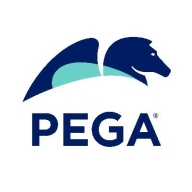

Red Hat Polymita Business Suite and Pega Platform are competing in the business process management space. Pega Platform tends to have an edge due to its comprehensive feature set, which is beneficial for complex projects.
Features: Red Hat Polymita Business Suite offers workflow automation, open-source flexibility, and customization. Pega Platform provides advanced analytics, decision management, and AI-driven process optimization, with better integration capabilities.
Ease of Deployment and Customer Service: Red Hat Polymita is suitable for small to medium-sized enterprises due to its straightforward deployment. Its customer service is responsive but often relies on community forums. Pega Platform offers scalable deployment options for large enterprises, supported by extensive training and professional services to ease transition.
Pricing and ROI: Red Hat Polymita’s lower initial investment offers a higher short-term ROI for smaller companies. Pega Platform demands a higher upfront cost but provides substantial returns via process efficiency and long-term scalability, advantageous for larger operations.
| Product | Market Share (%) |
|---|---|
| Pega Platform | 5.2% |
| Red Hat Polymita Business Suite | 0.2% |
| Other | 94.6% |

| Company Size | Count |
|---|---|
| Small Business | 9 |
| Midsize Enterprise | 15 |
| Large Enterprise | 68 |
Pega Platform facilitates business process management, case management, and workflow automation for industries like banking, insurance, and healthcare. It supports digital transformation and customer service enhancements with its low-code capabilities and seamless integrations.
Pega Platform enables users to create efficient systems for case management, financial operations, and digital transformations. It provides tools for client onboarding, quoting, claims processing, customer experience improvements, and content management. Pega's low-code approach allows for the automation of complex processes, making it suitable for enterprises looking for adaptability and rapid deployment. While it offers strong real-time analytics and decision automation, users acknowledge challenges in user interface, integration, and performance aspects. High costs and a learning curve need attention, and enhancements in AI features and cloud services are desired.
What are the key features of Pega Platform?In banking, Pega Platform automates loan processing, accelerates customer onboarding, and manages compliance. Insurance companies benefit from streamlined claims processing and policy management. Healthcare sectors use the platform for patient engagement and care coordination, enabling organizations to adapt quickly to changing industry requirements.
We monitor all Business Process Management (BPM) reviews to prevent fraudulent reviews and keep review quality high. We do not post reviews by company employees or direct competitors. We validate each review for authenticity via cross-reference with LinkedIn, and personal follow-up with the reviewer when necessary.